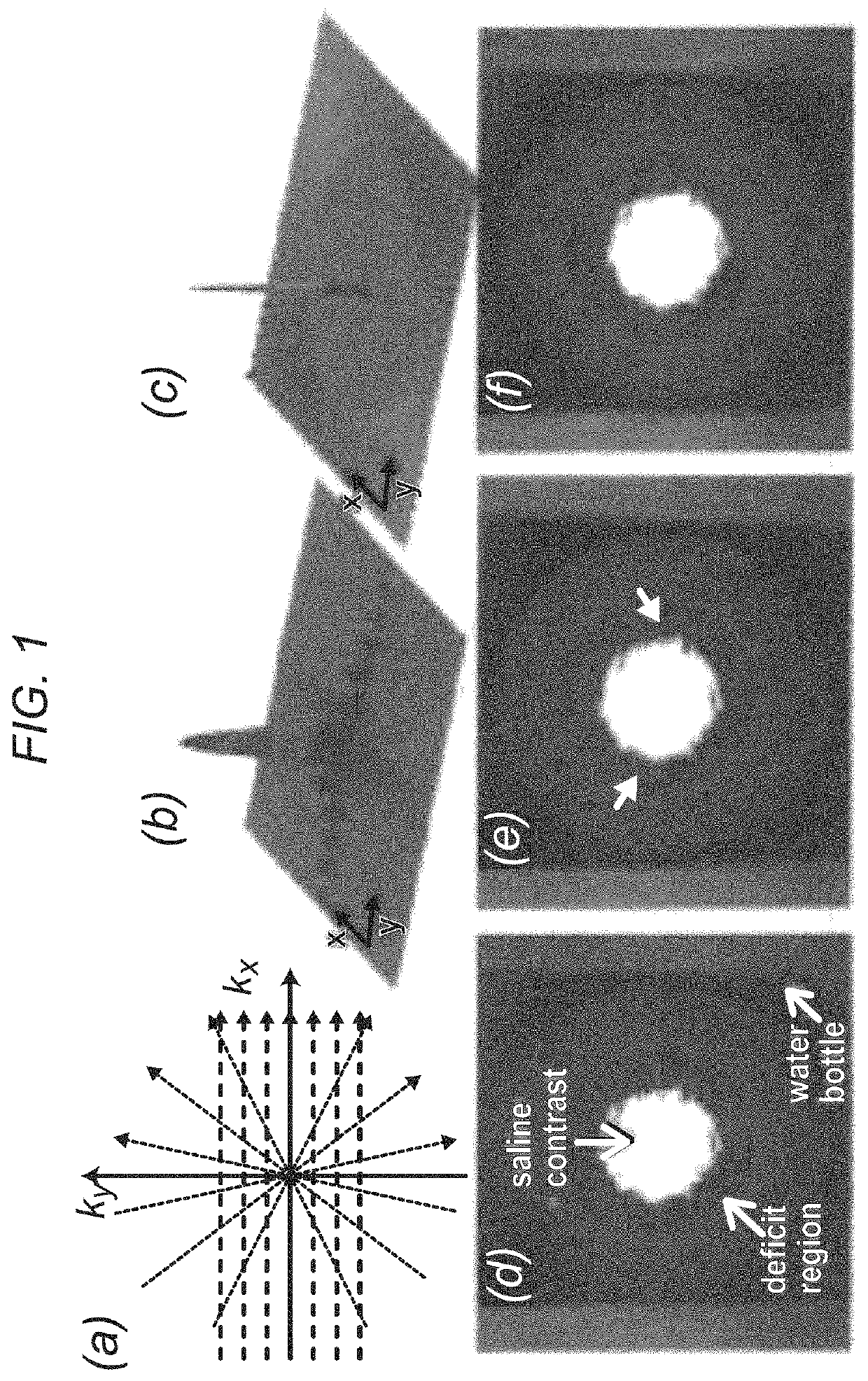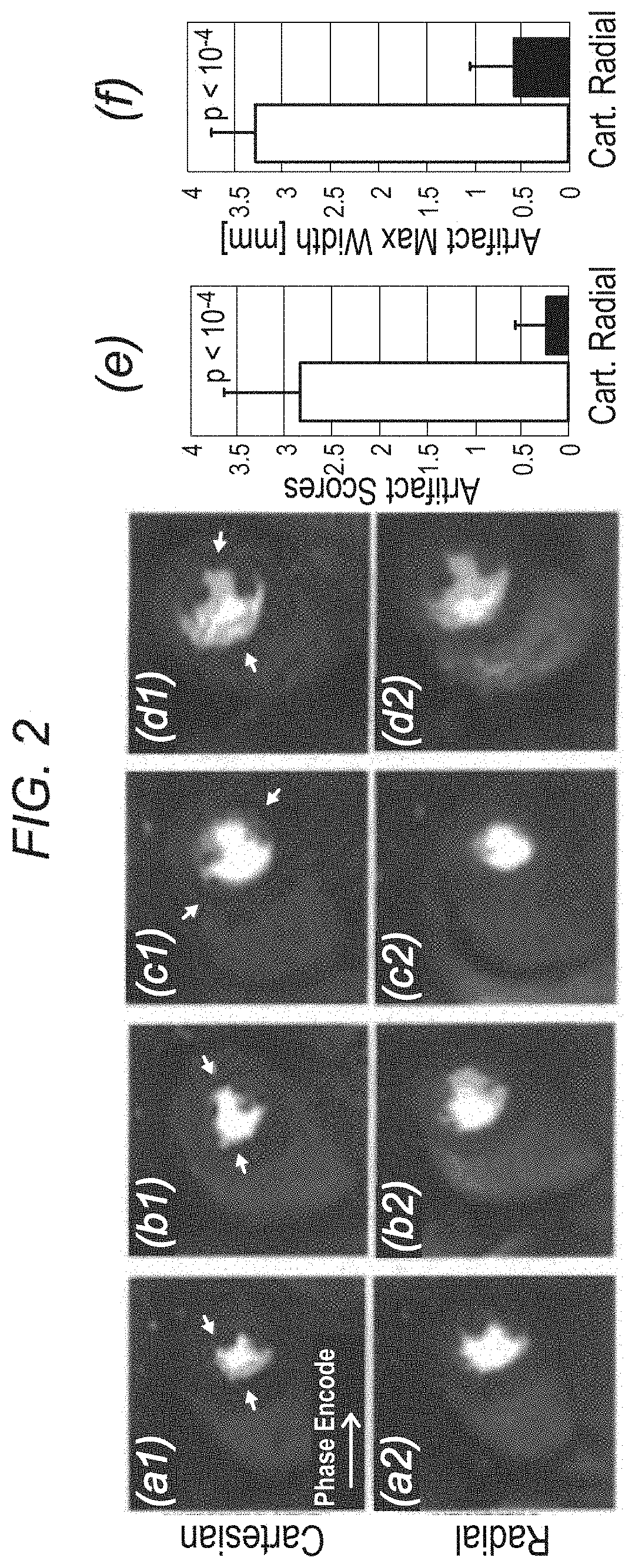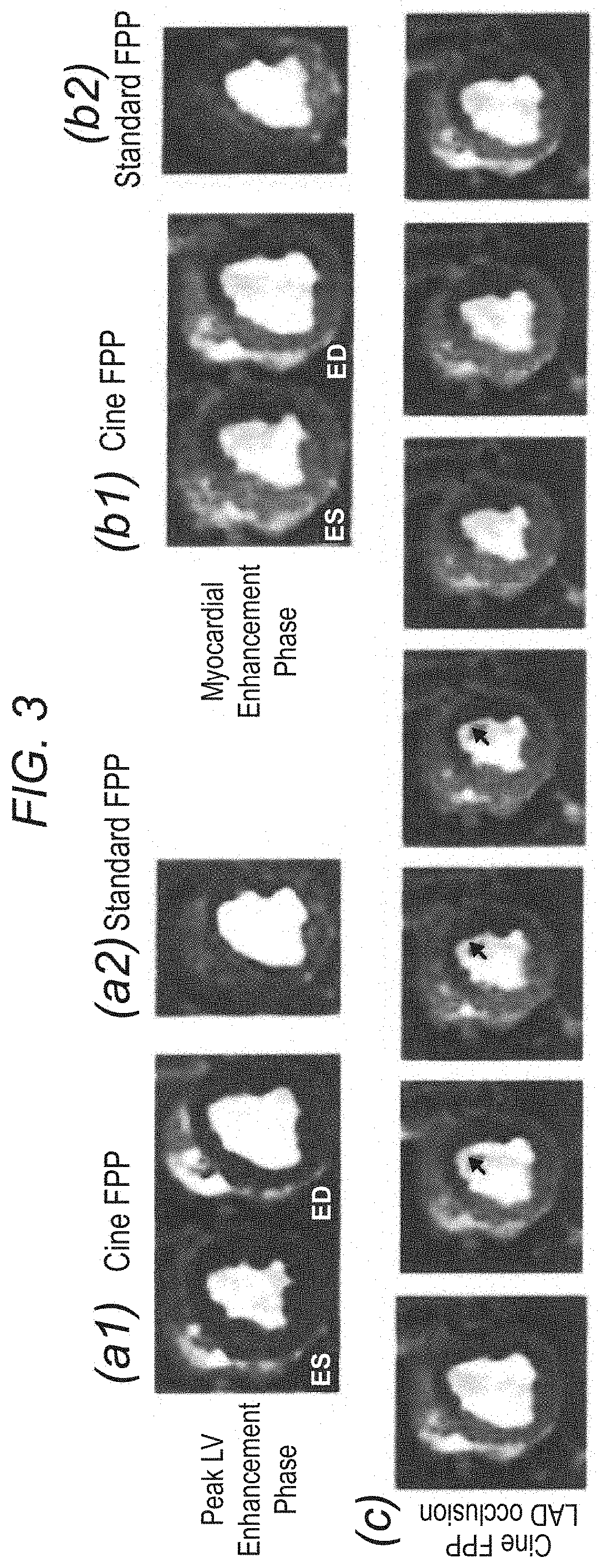Systems and methods for myocardial perfusion MRI without the need for ECG gating and additional systems and methods for improved cardiac imaging
a technology of myocardial perfusion and mri, which is applied in the field of imaging methods and systems, can solve the problems of limited widespread use of perfusion cmr, inability to achieve near-perfect ecg gating, and complex methods, and achieve the effects of reducing or eliminating dark rim artifacts
- Summary
- Abstract
- Description
- Claims
- Application Information
AI Technical Summary
Benefits of technology
Problems solved by technology
Method used
Image
Examples
example 1
Experiments I
Eliminating Dark-Rim Artifacts in First-Pass Myocardial Perfusion Imaging
Background
[0049]The inventors' experiments demonstrate that projection imaging significantly reduces the prevalence and spatial extent of subendocardial dark-rim artifacts (DRAs) in first-pass perfusion (FPP) myocardial MR, compared to conventional Cartesian techniques. A major cause of DRAs, which remain a major concern in FPP imaging, is known to be the so called Gibbs ringing (truncation) phenomenon. Radial k-space sampling exhibits minimal Gibbs effects with typical FPP parameters, thereby eliminating a major contributing factor to DRAs. The underlying principles are demonstrated in FIG. 1, which describes Cartesian and radial k-space sampling (with the same number of readouts) and the corresponding point spread functions (PSFs). Insufficient coverage along the phase-encode direction with Cartesian sampling results in significant ringing in the image domain (FIG. 1b). In contrast, angular under...
example 2
Experiments II
Ungated Cine First-Pass CMR for Concurrent Imaging of Myocardial Perfusion Defects and Wall Motion Abnormalities
Background
[0053]Combined assessment of wall motion from cine imaging and perfusion defects from first-pass perfusion (FPP) imaging has been shown to have high diagnostic performance for detection of acute ischemia. In this setting, a single ungated CMR scan capable of simultaneously capturing perfusion deficits and wall motion abnormality can be useful for rapid diagnosis of ongoing acute ischemia. Described herein is an accelerated FPP technique with ungated continuous acquisition capable of generating cardiac-phase resolved FPP images, thereby enabling concurrent imaging of wall motion and perfusion deficits.
Methods
[0054]FPP imaging without magnetization preparation using a steady state acquisition has been described before and seen recent interest, wherein the focus has been on acquiring one image during the quiescent phase. Canines with reversible ischemi...
example 3
Experiments III
Real-Time First-Pass Perfusion Myocardial MRI Using Ungated Magnetization-Driven Radial Sampling
Overview
[0057]As described herein below, another aspect of the invention involves establishing an ungated first-pass perfusion (FPP) cardiac MRI (CMR) technique that improves accessibility and diagnostic capability of perfusion CMR in clinical practice. The inventors studied the effectiveness of a real-time FPP imaging technique using ungated magnetization-driven acquisition employing radial sampling.
[0058]An ungated T1-weighted pulse sequence with continuous 2D golden-angle radial sampling was developed by the inventors for FPP imaging. The flip angle was optimized using simulations to achieve maximum contrast-to-noise ratio (CNR) between hypoperfused and normal myocardium. A sliding-window scheme was used to enable reconstruction of 8 real-time frames per second. Canines (n=5) were imaged at 3T with and without coronary stenosis and FPP data was acquired using the real-ti...
PUM
 Login to View More
Login to View More Abstract
Description
Claims
Application Information
 Login to View More
Login to View More - R&D
- Intellectual Property
- Life Sciences
- Materials
- Tech Scout
- Unparalleled Data Quality
- Higher Quality Content
- 60% Fewer Hallucinations
Browse by: Latest US Patents, China's latest patents, Technical Efficacy Thesaurus, Application Domain, Technology Topic, Popular Technical Reports.
© 2025 PatSnap. All rights reserved.Legal|Privacy policy|Modern Slavery Act Transparency Statement|Sitemap|About US| Contact US: help@patsnap.com



